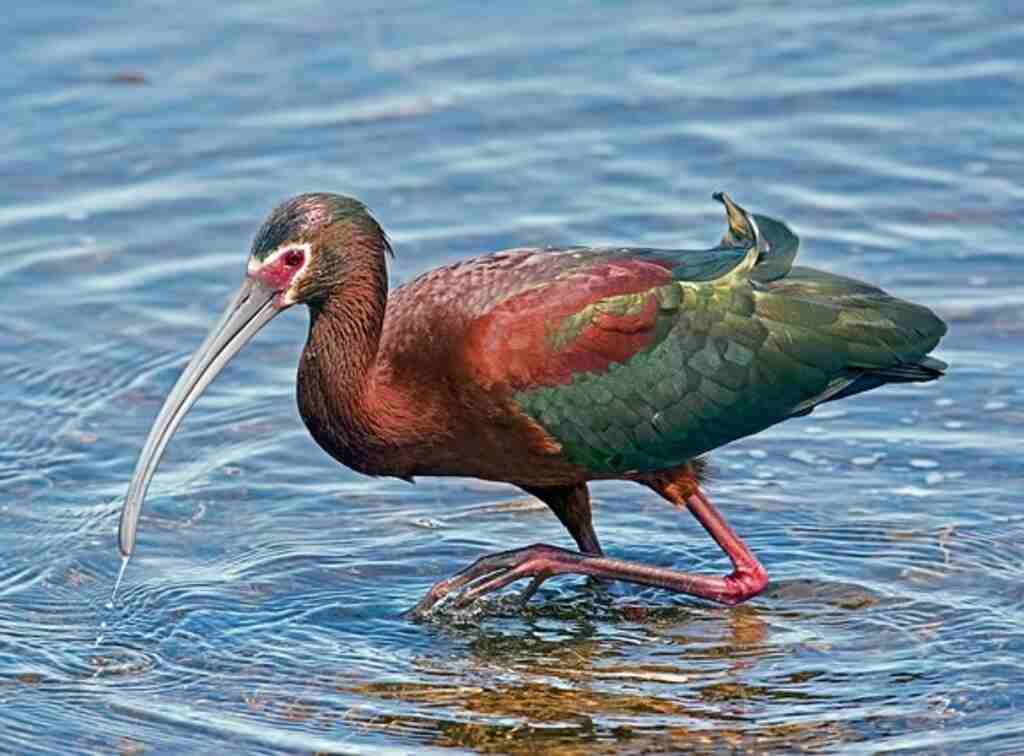If you’re a birdwatching enthusiast, Idaho should be on your list of must-visit destinations. With its diverse habitats and ecosystems, the state attracts a wide variety of bird species, making it a prime location for birdwatching.
In this comprehensive guide, we’ll take you through the top birdwatching hotspots in Idaho, highlighting the unique bird species and offering insights into the best times and locations for sightings.
Table of Contents
- 1 Key Takeaways:
- 2 Best Birdwatching Hotspots in Idaho
- 3 Why Idaho is a Haven for Birdwatchers
- 4 Snake River Birds: Exploring the Canyonlands
- 5 Discover Avian Diversity in the Sawtooth Mountains
- 6 Wading Through the Birds of Bear Lake
- 7 Exploring Birds of Prey in the Morley Nelson Snake River Birds of Prey National Conservation Area
- 8 Discovering Avocets and More at Camas National Wildlife Refuge
- 9 Rare Sightings: Birds of the Idaho Panhandle National Forests
- 10 Special Encounters at the Market Lake Wildlife Management Area
- 11 Discovering Raptors at the World Center for Birds of Prey
- 12 Exploring Birds Along the Salmon River
- 13 Conclusion
- 14 FAQs: Best Birdwatching Hotspots in Idaho
- 14.1 What is the purpose of this article?
- 14.2 Why is Idaho a haven for birdwatchers?
- 14.3 What birdwatching opportunities are available in the Snake River Canyonlands?
- 14.4 What avian diversity can be discovered in the Sawtooth Mountains?
- 14.5 What can be spotted at Bear Lake in terms of wading birds?
- 14.6 What birds of prey can be observed at the Morley Nelson Snake River Birds of Prey National Conservation Area?
- 14.7 What can be discovered at the Camas National Wildlife Refuge?
- 14.8 What rare bird species can be spotted in the Idaho Panhandle National Forests?
- 14.9 What special birdwatching encounters can be had at the Market Lake Wildlife Management Area?
- 14.10 What can be discovered at the World Center for Birds of Prey?
- 14.11 What birdwatching opportunities are available along the Salmon River?
- 15 Author
Key Takeaways:
- Idaho is a haven for birdwatchers due to its diverse habitats and ecosystems.
- The Snake River Canyonlands, Sawtooth Mountains, Bear Lake, Morley Nelson Snake River Birds of Prey National Conservation Area, Camas National Wildlife Refuge, Idaho Panhandle National Forests, Market Lake Wildlife Management Area, World Center for Birds of Prey, and Salmon River are all excellent birdwatching locations in Idaho.
- Each hotspot offers unique bird species and experiences, providing birdwatchers with an unforgettable adventure.

Best Birdwatching Hotspots in Idaho
Idaho is home to a diverse array of bird species, making it a great destination for birdwatching. Some of the best hotspots include Hagerman Wildlife Refuge, Camas National Wildlife Refuge, and Snake River Birds of Prey National Conservation Area.
Other notable locations include Grays Lake National Wildlife Refuge, Kootenai National Wildlife Refuge, and Bear Lake National Wildlife Refuge. With its scenic landscapes and rich birdlife, Idaho is a must-visit destination for birdwatchers of all levels.
Why Idaho is a Haven for Birdwatchers
If you’re looking for a great birdwatching destination, Idaho should be at the top of your list. This beautiful state is home to a diverse range of habitats and ecosystems, attracting bird species from all over the world. From the Snake River Canyonlands to the Sawtooth Mountains and beyond, Idaho offers some of the best birdwatching spots in the country.
One of the reasons that Idaho is such a great destination for birdwatchers is its diverse landscape. The state is home to rugged mountain ranges, vast grasslands, stunning wetlands, and much more. This diverse range of habitats provides homes for many different bird species, making Idaho a birdwatcher’s paradise.
Another reason why Idaho is such a great destination for birdwatchers is that it offers so many different types of birdwatching experiences. Whether you’re interested in wading birds, birds of prey, or something else entirely, you’re sure to find the perfect birdwatching opportunity in Idaho.
Some of the best birdwatching hotspots in Idaho include the Snake River Birds of Prey National Conservation Area, the Sawtooth Mountains, Bear Lake, and the Camas National Wildlife Refuge. These locations offer stunning views, a wide variety of bird species, and plenty of opportunities for birdwatchers of all skill levels.
So if you’re a birdwatching enthusiast, make sure to add Idaho to your list of must-visit destinations. With its stunning landscapes, diverse habitats, and amazing birdwatching opportunities, it’s no wonder that Idaho is a haven for birdwatchers.
Snake River Birds: Exploring the Canyonlands
The Morley Nelson Snake River Birds and the surrounding Canyonlands provide ample opportunities for birdwatchers to observe unique bird species in their natural habitats. This area is a must-visit destination for those hoping to see some of Idaho’s most sought-after birds.
| Species | Hotspots for Sightings |
|---|---|
| Peregrine Falcon | Morley Nelson Snake River Birds of Prey National Conservation Area |
| California Quail | Canyonlands along the Snake River |
| Canyon Wren | Canyonlands along the Snake River |
The Peregrine Falcon is especially noteworthy, known for its breathtaking speed and agility. This raptor’s nesting sites can be found throughout the area, making it a prime location for birdwatchers hoping to catch a glimpse of these impressive birds.
“The Snake River Birds of Prey National Conservation Area is home to the highest concentration of nesting raptors in North America, making it a premier destination for birdwatchers hoping to observe these magnificent birds in their natural habitats.”
The Canyonlands along the Snake River also provide excellent opportunities to view California Quail and Canyon Wrens. Both species can be found in the numerous rock formations and crevices scattered throughout the area. These birds are known for their distinctive calls and behaviors, making them fascinating subjects for observation.
Whether you’re an experienced birdwatcher or a beginner, exploring the Snake River Birds and the surrounding Canyonlands is an absolute must. Don’t miss out on the chance to view some of Idaho’s most unique bird species.
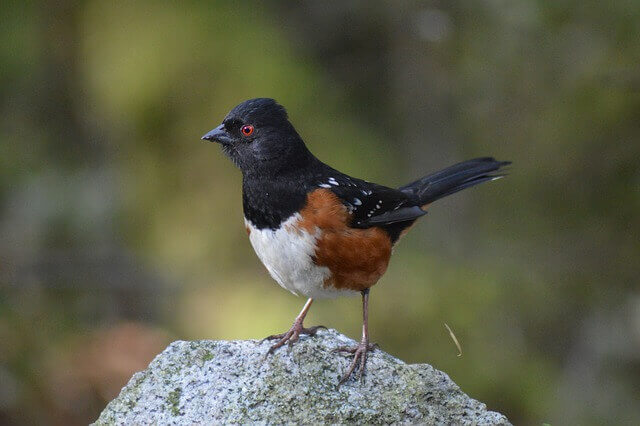
Discover Avian Diversity in the Sawtooth Mountains
The Sawtooth Mountains in Idaho are home to some of the most diverse bird species in the state, offering birdwatchers a unique and exciting experience. With over 300 species of birds observed in the area, the Sawtooth Mountains provide an opportunity for bird lovers to discover a wide range of avian diversity.
Trails and Routes for Birdwatching
The Sawtooth Mountains offer numerous trails and routes that are ideal for birdwatching. One of the most popular trails is the Alice Lake Trail, which starts from the Tin Cup Trailhead. The trail takes you through pine forests, alpine meadows, and granite cliffs where you can spot a variety of birds.
The Bench Lakes Trail is another popular route that takes you through a series of small lakes and meadows where you can observe waterfowl and songbirds.
Bird Species in the Sawtooth Mountains
The Sawtooth Mountains are home to a variety of bird species, including the Mountain Bluebird, Gray-crowned Rosy-Finch, Red-breasted Nuthatch, and the Clark’s Nutcracker. Birdwatchers can also spot raptors such as Bald Eagles, Golden Eagles, and Peregrine Falcons.
Other species that can be observed in the area include the Great Gray Owl, Northern Pygmy Owl, and White-headed Woodpecker.
| Species | Peak Viewing Time | Preferred Habitat |
|---|---|---|
| Mountain Bluebird | Spring and Summer | Open Country, Meadows |
| Gray-crowned Rosy-Finch | Year-round | Alpine Tundra |
| Red-breasted Nuthatch | Year-round | Coniferous Forests |
| Clark’s Nutcracker | Year-round | Coniferous Forests |
“The Sawtooth Mountains are a paradise for bird lovers, providing unparalleled opportunities to observe diverse bird species in their natural habitats.”
Aside from the Alice Lake Trail and the Bench Lakes Trail, other routes and trails that offer excellent birdwatching opportunities in the Sawtooth Mountains include the Cape Horn Lakes Trail, Alpine Way Trail, and the Stanley Lake Creek Trail. These routes take you through different habitats where you can observe a variety of bird species.
For birdwatchers looking to explore the diverse avian species of Idaho, the Sawtooth Mountains are a must-visit destination. With their stunning landscapes and wide range of bird species, the Sawtooth Mountains offer a unique and unforgettable birdwatching experience.
Wading Through the Birds of Bear Lake
Bear Lake, situated at the Utah-Idaho border, is a popular destination for water sports enthusiasts and nature lovers alike. But did you know that the lake is also a haven for wading birds? If you’re a keen birdwatcher, Bear Lake should definitely be on your list of locations to visit in Idaho.
The lake’s shallow waters and surrounding marshes create the perfect habitat for a variety of wading birds, including the American Avocet, Black-necked Stilt, and Wilson’s Phalarope. These elegant birds can be seen wading through the water, picking at small creatures with their narrow bills.
If you’re planning a visit to Bear Lake for birdwatching, here are some tips to keep in mind:
- Visit in the summer months between May and August for the best sightings.
- Head to the south shore of the lake, near Garden City, for the best locations to spot wading birds.
- Bring binoculars and a spotting scope for up-close observations of the birds in their natural habitat.
“The sight of these birds wading through the tranquil waters of Bear Lake is truly a sight to behold. It’s a reminder of the beauty and diversity of nature that can be found here in Idaho.”
If you’re interested in learning more about wading birds and their behaviors, you can also visit the nearby Bear Lake National Wildlife Refuge. This refuge serves as a protected area for many bird species, and offers guided tours and educational programs for visitors.
For birdwatchers looking for a unique and peaceful experience, Bear Lake is the perfect destination. With its picturesque surroundings and abundant wading birds, it’s sure to be a memorable visit for any nature enthusiast.

Exploring Birds of Prey in the Morley Nelson Snake River Birds of Prey National Conservation Area
The Morley Nelson Snake River Birds of Prey National Conservation Area is a popular destination for birdwatching enthusiasts due to its unique concentration of raptor species. Located in southwestern Idaho, this area encompasses over 485,000 acres of high desert land along the Snake River.
The conservation area provides a protected habitat for over 700 pairs of nesting raptors, including falcons, eagles, hawks, and owls. Visitors can witness these birds of prey in their natural habitat, soaring through the sky or perched on rocky outcrops.
Exploring the Raptors
One of the best ways to see the raptors is to take a guided tour or hike along the trails in the conservation area. Guided tours are available and led by knowledgeable raptor experts who can provide insight into the behavior and habits of these fascinating birds.
Visitors can also hike or bike along the Snake River Canyon Trail, which provides stunning views of the river and access to prime raptor viewing areas. Along this trail, you may spot peregrine falcons, golden eagles, and prairie falcons.
Nesting Sites
The conservation area is home to several important nesting sites for raptors, including the famed Kestrel Nest Box Trail. This trail consists of 60 nest boxes designed specifically for American kestrels, providing a much-needed habitat for these birds of prey.
The area also contains nesting sites for Swainson’s Hawks, which can be seen soaring over the grasslands in search of prey.
Visitor Information
When visiting the Morley Nelson Snake River Birds of Prey National Conservation Area, it’s important to respect the area’s fragile ecosystem. Visitors should stay on designated trails to minimize their impact on the environment and avoid disturbing the nesting raptors.
The best time to visit for raptor sightings is from March to June, when the birds are most active and visible. Visitors should plan for hot and dry conditions and bring plenty of water and sunscreen.
Overall, the Morley Nelson Snake River Birds of Prey National Conservation Area is a must-visit destination for birdwatching enthusiasts, offering a rare opportunity to see some of North America’s most impressive raptor species in their natural habitat.
Discovering Avocets and More at Camas National Wildlife Refuge
The Camas National Wildlife Refuge is known for its abundant birdlife, with over 230 species of birds having been recorded on the refuge. Among the most iconic of these species are the American Avocet, which breeds at the refuge, as well as Sandhill Cranes, which use the area as a stopover during their annual migration.
The refuge is also home to a range of raptors, including Red-tailed Hawks, Northern Harriers, and Bald Eagles. The wetlands and marshes of the refuge are also home to a variety of waterfowl, such as Canada Geese, Mallards, and Northern Pintails.
Visitors to the refuge can explore the various trails and observation points to fully experience the diverse birdlife of the area. The Camas NWR Nature Trail is a 1.5-mile loop trail that provides a great introduction to the refuge’s bird life. The Auto Tour route is a 5-mile road that provides visitors with excellent views of the wetlands and the birds that inhabit them.
Birdwatching Tips:
- Bring binoculars for optimal viewing of the birds
- Wear comfortable shoes for hiking and walking the trails
- Visit during Spring and Fall when the bird species are most active
“The Camas National Wildlife Refuge is an important stopover for migrating birds and a haven for a variety of bird species. It is a must-visit location for bird lovers and nature enthusiasts.”
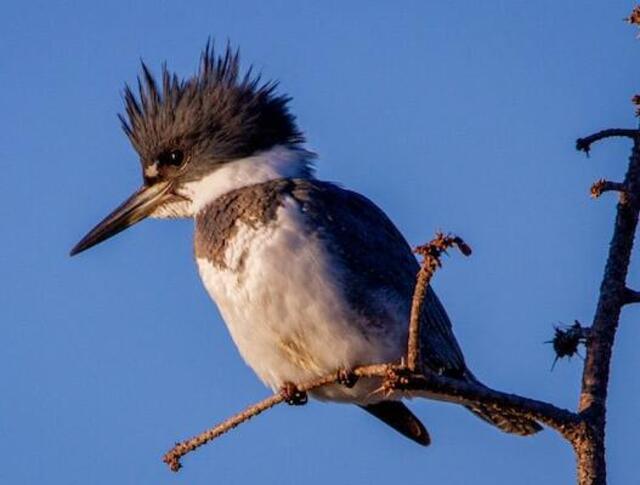
Rare Sightings: Birds of the Idaho Panhandle National Forests
The Idaho Panhandle National Forests boast a diverse range of bird species, including some rare and elusive sightings. The forests span over three million acres and cover a varied terrain, from rugged mountains to deep valleys. This unique ecosystem attracts a range of bird species, making it a must-visit destination for any birdwatching enthusiast.
The Rare Birds of Idaho Panhandle National Forests
One of the rare sightings in the forest is the White-headed Woodpecker. These birds are distinctive thanks to their black and white striped plumage and bright red heads, making them easy to spot amongst the trees.
Another rare sighting is the Northern Goshawk, a large raptor that nests in the forest’s dense coniferous trees. The Goshawk’s striking gray plumage and fierce demeanor make it an impressive sight for birders lucky enough to spot it in the wild.
Other notable bird species in the forest include the Mountain Bluebird, which can be seen flying high above the mountains, and the Great Gray Owl, with its distinctive facial disc and mottled grey and white feathers.
The Best Times and Locations for Birdwatching in Idaho Panhandle National Forests
The best time for birdwatching at the Idaho Panhandle National Forests is during the spring and summer months, when many bird species are breeding and nesting. The forests’ varied terrain means that different bird species congregate in different areas.
For example, the White-headed Woodpecker can be found in the mature pine forests, while the Northern Goshawk can be spotted among the older coniferous trees.
Birdwatchers can explore the forest’s numerous trails and routes to maximize their sightings. The Coeur d’Alene River and Trail is a popular route for birdwatching, offering stunning views of the forest’s diverse ecosystem.
The trail is also home to many wildlife species, including elk, deer, and black bears, so visitors must be cautious and respectful of the animals’ habitats.
Special Encounters at the Market Lake Wildlife Management Area
The Market Lake Wildlife Management Area is a must-visit destination for birdwatching enthusiasts in Idaho. This wildlife refuge spans over 4,000 acres and is home to a variety of bird species, including sandhill cranes, American avocets, and white-faced ibis.
The wildlife management area is open year-round, but spring and fall are the best times to visit for birdwatching. During the spring, visitors can witness the mating rituals of sandhill cranes, while in the fall, migratory birds flock to the area for feeding and rest.
Several walking trails and observation points provide excellent views of the birds in their natural habitats. The refuge’s unique topography, which includes wetlands, marshes, and open water, creates a diverse ecosystem that attracts a wide variety of bird species.
For those looking for a unique birdwatching experience, the Market Lake Wildlife Management Area offers the opportunity to witness bird banding. This process involves capturing birds, placing a small metal band on their leg with a unique identification number, and then releasing them back into the wild. This practice helps researchers track bird populations and migration patterns.
If you’re planning a visit to the Market Lake Wildlife Management Area, be sure to bring binoculars, a bird guidebook, and plenty of water and sunscreen. It’s also important to respect the birds’ natural environment, keeping a safe distance and avoiding disturbing their habitats.
Discovering Raptors at the World Center for Birds of Prey
The World Center for Birds of Prey, located outside of Boise, offers a unique opportunity to observe and learn about raptors. The center is dedicated to conservation efforts and research on birds of prey, making it an essential destination for birdwatching enthusiasts.
Visitors can explore the center’s interpretive trail, which winds through the surrounding desert landscape and offers stunning views of the nearby mountains.
Along the trail, observation decks provide opportunities to view raptors in their natural habitats, including several species of eagles, hawks, falcons, and owls.
The center also offers guided tours that delve deeper into the world of raptors. Visitors can learn about the biology and behavior of these birds, as well as the role they play in their respective ecosystems.
The center’s demonstrations showcase the impressive hunting techniques and aerial acrobatics of these magnificent creatures.
Interactive Exhibits and Educational Programs
In addition to the interpretive trail and guided tours, the World Center for Birds of Prey features interactive exhibits and educational programs for all ages. Visitors can explore the center’s state-of-the-art facilities, including a breeding center that has successfully hatched and raised over 500 endangered raptor chicks.
The center’s outreach programs aim to educate the public about conservation efforts and the importance of protecting raptor species. Visitors can attend lectures and workshops on a variety of topics related to birds of prey, as well as participate in field trips and outreach events.
Whether you’re a seasoned birdwatcher or simply interested in learning more about raptors, the World Center for Birds of Prey is an essential destination in Idaho. With its stunning natural surroundings and commitment to conservation and research, the center offers a unique and unforgettable experience for all who visit.
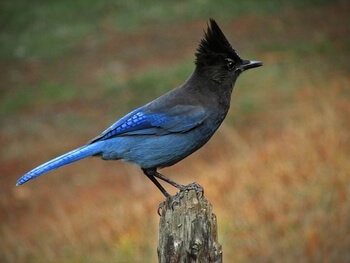
Exploring Birds Along the Salmon River
One of the best places to explore birds in Idaho is along the serene Salmon River. The picturesque winding river is surrounded by stunning mountain vistas and sweeping valleys that provide the perfect habitats for various bird species.
Some of the birds that can be spotted along the Salmon River include Bald Eagles, Ospreys, and Common Loons. The river also attracts waterfowl such as Mallards, Wood Ducks, and Canada Geese. Additionally, visitors can catch a glimpse of the stunning Western Tanager, the vibrant American Goldfinch, and the elusive American Dipper.
The best way to explore the birds of the Salmon River is by hiking the various trails. One of the most popular trails is the Salmon River Trail, which runs along the river’s edge, offering stunning views of the surrounding wilderness and opportunities for birdwatching.
For those who prefer to stay closer to the water, kayaking or canoeing along the Salmon River is an excellent way to explore the birds at a leisurely pace. The river’s calm currents allow for a peaceful and relaxed birdwatching experience.
The Salmon River is also home to several designated wildlife areas, such as the Challis National Forest and the Frank Church-River of No Return Wilderness. These areas are home to a variety of bird species and provide a unique and unforgettable birdwatching experience.
Conclusion
In conclusion, Idaho is a haven for birdwatchers and boasts some of the most incredible birdwatching hotspots in the country. From the Snake River Birds of the Canyonlands to the World Center for Birds of Prey and the Market Lake Wildlife Management Area, bird lovers can explore a diverse range of habitats and ecosystems.
As you plan your birdwatching trip to Idaho, remember to respect the natural environment and preserve the habitats of these incredible birds. With the information provided in this article, you can create an itinerary that maximizes your sightings and enhances your overall birdwatching experience.
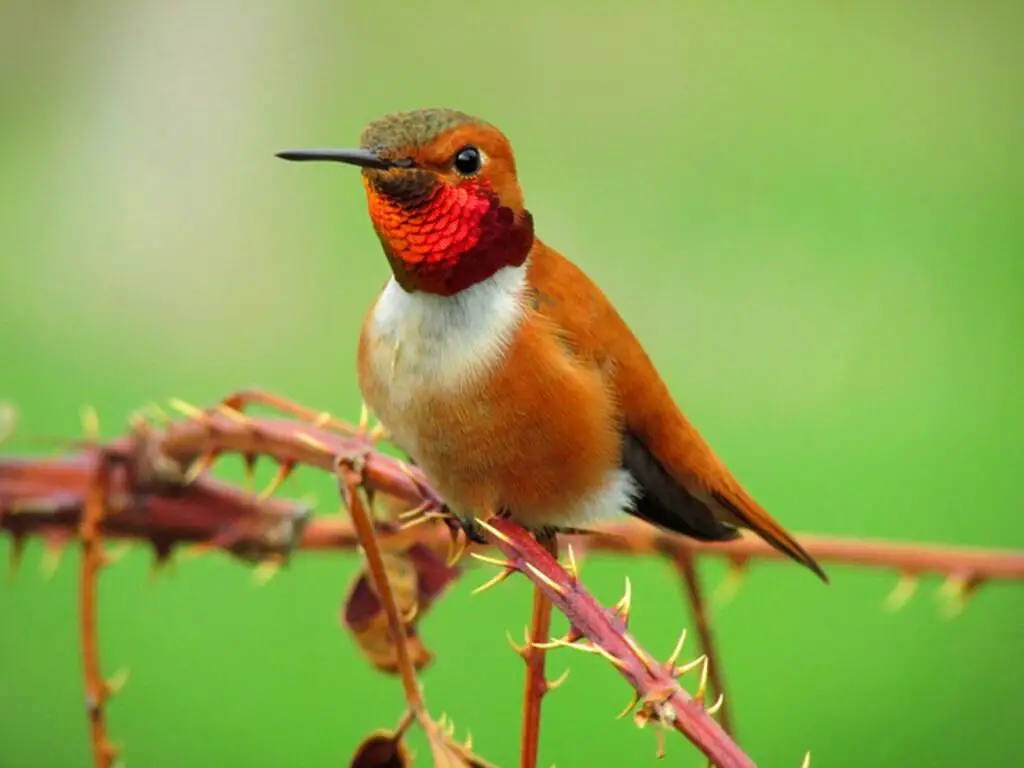
FAQs: Best Birdwatching Hotspots in Idaho
What is the purpose of this article?
This article serves as a comprehensive guide for birdwatching enthusiasts in Idaho, highlighting the top birdwatching hotspots in the state and providing valuable information for bird lovers.
Why is Idaho a haven for birdwatchers?
Idaho boasts diverse habitats and ecosystems that attract a wide variety of bird species, making it a paradise for birdwatchers. The state offers some of the best birdwatching spots and destinations for bird lovers to explore.
What birdwatching opportunities are available in the Snake River Canyonlands?
The Snake River Canyonlands offer unique birdwatching opportunities, showcasing a variety of bird species. Specific sightings and hotspots are highlighted for birdwatchers to visit and explore.
What avian diversity can be discovered in the Sawtooth Mountains?
The Sawtooth Mountains are home to a diverse range of avian species. This section discusses the different bird species found in the mountain range and provides information on the trails and routes that birdwatchers can explore.
What can be spotted at Bear Lake in terms of wading birds?
Bear Lake is a prime location for observing wading birds. This section provides insights into the various wading bird species that can be spotted in the area, including information on their behaviors and habitats.
What birds of prey can be observed at the Morley Nelson Snake River Birds of Prey National Conservation Area?
The Morley Nelson Snake River Birds of Prey National Conservation Area is known for its raptor species. This section highlights specific birds of prey and their nesting grounds, providing valuable information for birdwatchers.
What can be discovered at the Camas National Wildlife Refuge?
The Camas National Wildlife Refuge is known for its abundance of avocets and other bird species. This section delves into the seasonal migrations and breeding patterns of these birds, as well as the trails and observation points within the refuge.
What rare bird species can be spotted in the Idaho Panhandle National Forests?
The Idaho Panhandle National Forests offer sightings of rare bird species. This section explores the specific habitats and conditions that make this area attractive to these elusive birds, providing tips for birdwatchers.
What special birdwatching encounters can be had at the Market Lake Wildlife Management Area?
The Market Lake Wildlife Management Area offers unique birdwatching encounters. This section highlights the bird species that can be observed in the area and provides information on the best times and locations for sightings.
What can be discovered at the World Center for Birds of Prey?
The World Center for Birds of Prey offers opportunities to observe and learn about raptors. This section provides insights into the center’s conservation efforts and research, as well as the chance for birdwatchers to witness these majestic birds.
What birdwatching opportunities are available along the Salmon River?
The Salmon River offers excellent birdwatching opportunities. This section highlights the bird species found in the area and provides information on the best trails and access points for birdwatching.

